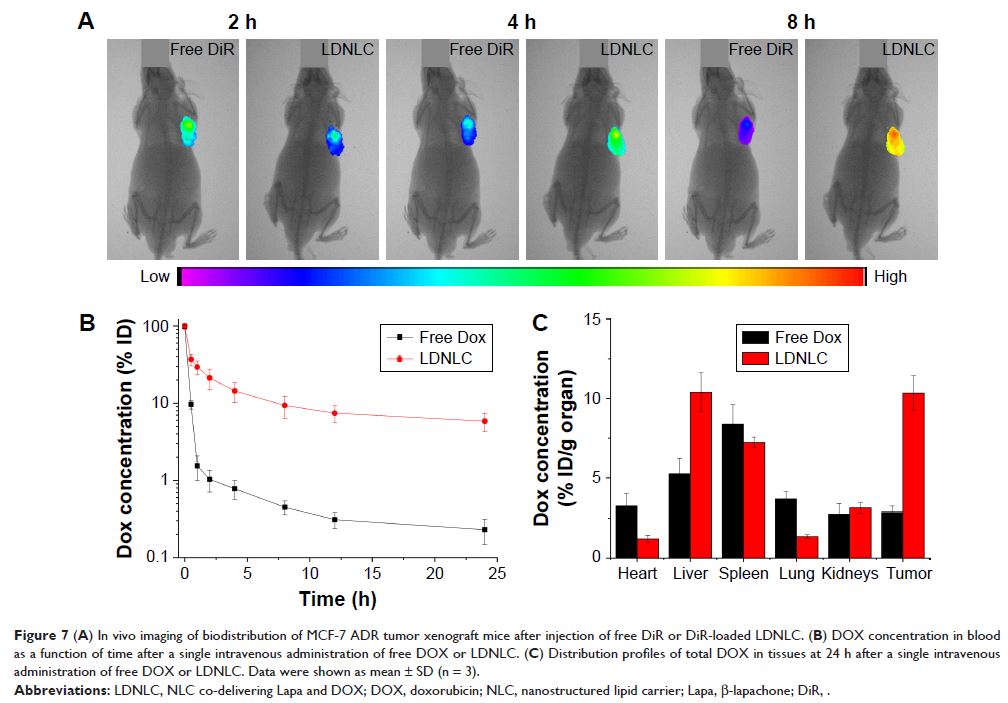9 0 5 7 8
论文已发表
注册即可获取德孚的最新动态
IF 收录期刊
- 2.6 Breast Cancer (Dove Med Press)
- 3.9 Clin Epidemiol
- 3.3 Cancer Manag Res
- 3.9 Infect Drug Resist
- 3.6 Clin Interv Aging
- 4.8 Drug Des Dev Ther
- 2.8 Int J Chronic Obstr
- 8.0 Int J Nanomed
- 2.3 Int J Women's Health
- 3.2 Neuropsych Dis Treat
- 4.0 OncoTargets Ther
- 2.2 Patient Prefer Adher
- 2.8 Ther Clin Risk Manag
- 2.7 J Pain Res
- 3.3 Diabet Metab Synd Ob
- 4.3 Psychol Res Behav Ma
- 3.4 Nat Sci Sleep
- 1.9 Pharmgenomics Pers Med
- 3.5 Risk Manag Healthc Policy
- 4.5 J Inflamm Res
- 2.3 Int J Gen Med
- 4.1 J Hepatocell Carcinoma
- 3.2 J Asthma Allergy
- 2.3 Clin Cosmet Investig Dermatol
- 3.3 J Multidiscip Healthc

纳米结构脂质载体共同递送拉帕醌和多柔比星,以克服乳腺癌治疗中的多药耐药性
Authors Li X, Jia X, Niu H
Received 28 January 2018
Accepted for publication 5 March 2018
Published 12 July 2018 Volume 2018:13 Pages 4107—4119
DOI https://doi.org/10.2147/IJN.S163929
Checked for plagiarism Yes
Review by Single-blind
Peer reviewers approved by Dr Alicia Fernandez-Fernandez
Peer reviewer comments 4
Editor who approved publication: Dr Linlin Sun
Background: Multidrug
resistance is responsible for the poor outcome in breast cancer therapy. Lapa
is a novel therapeutic agent that generates ROS through the catalysis of the
NAD(P)H:quinone oxidoreductase-1 (NQO1) enzyme which significantly facilitate the
intracellular accumulation of the co-delivered DOX to overcome MDR in cancer
cells.
Purpose: Herein, in our study, nanostructured lipid carrier (NLC)
co-delivering β-lapachone (Lapa) and doxorubicin (DOX) was developed (LDNLC)
with the aim to overcome the multidrug resistance (MDR) in breast cancer
therapy.
Patients and
methods: Lapa and DOX were loaded into
NLC to prepare LDNLC using melted ultrasonic dispersion method.
Results: The well designed LDNLC was nanoscaled particles that exhibited
preferable stability in physiological environment. In vitro cell experiments on
MCF-7 ADR cells showed increased DOX retention as compared to DOX mono-delivery
NLC (DNLC). In vivo anti-cancer assays on MCF-7 ADR tumor bearing mice model
also revealed significantly enhanced efficacy of LDNLC than mono-delivery NLCs
(DNLC and LNLC).
Conclusion: LDNLC might be a promising platform for effective breast cancer
therapy.
Keywords: β-lapachone, doxorubicin, nanostructured lipid carriers, multidrug
resistance, breast cancer
